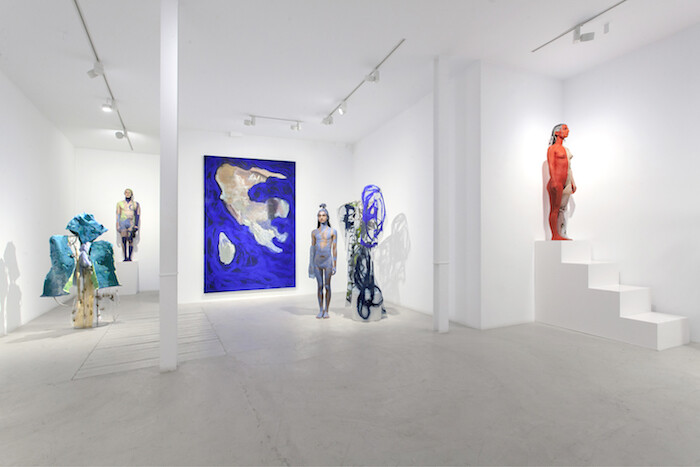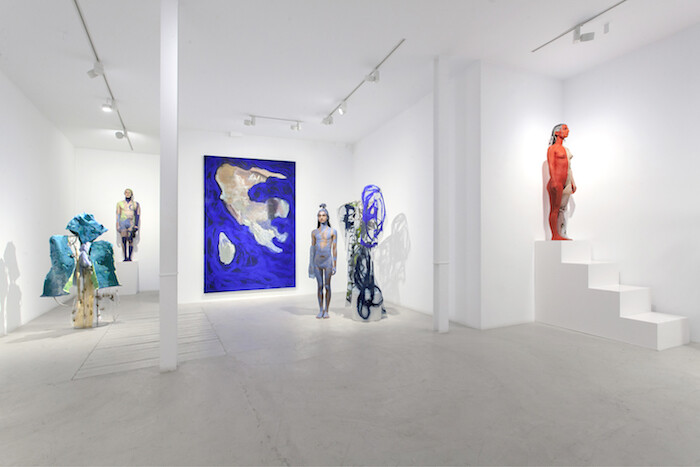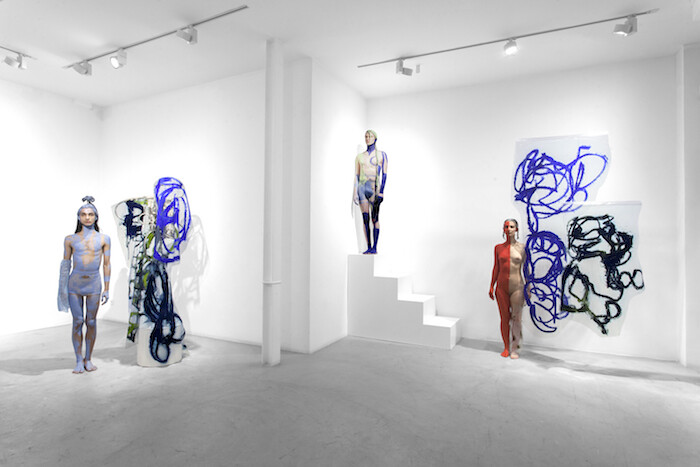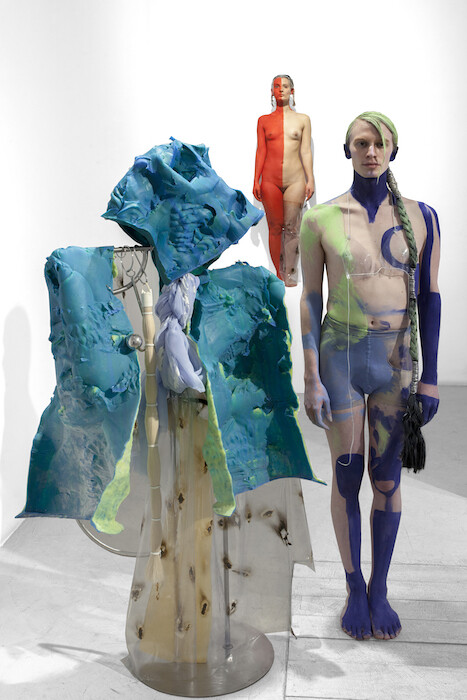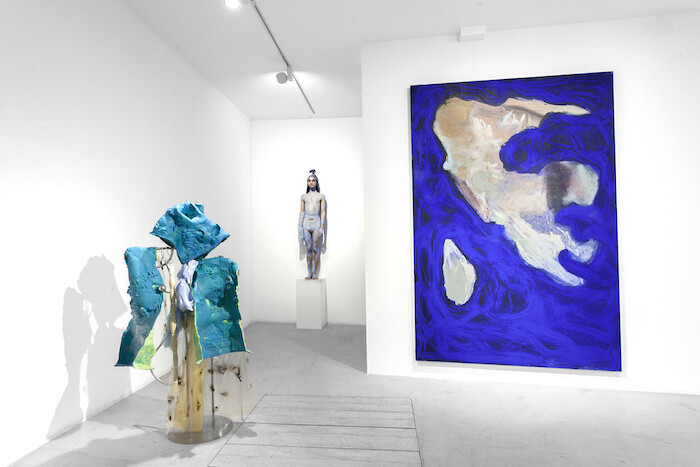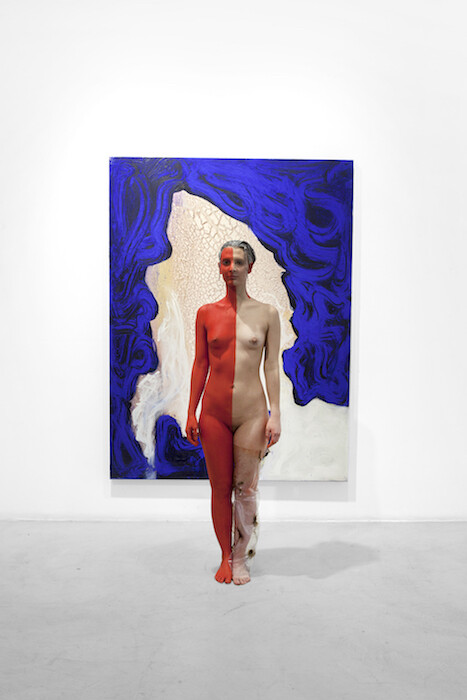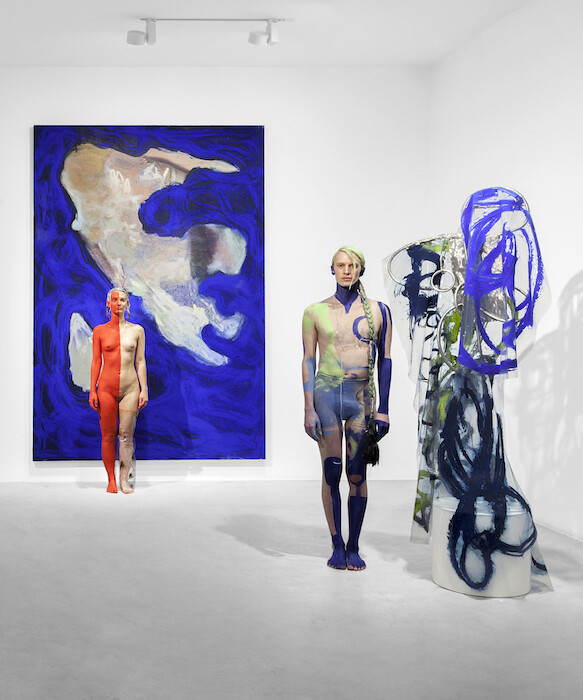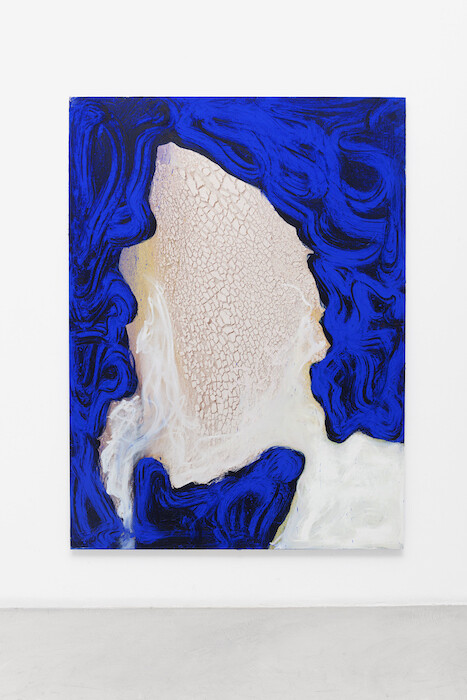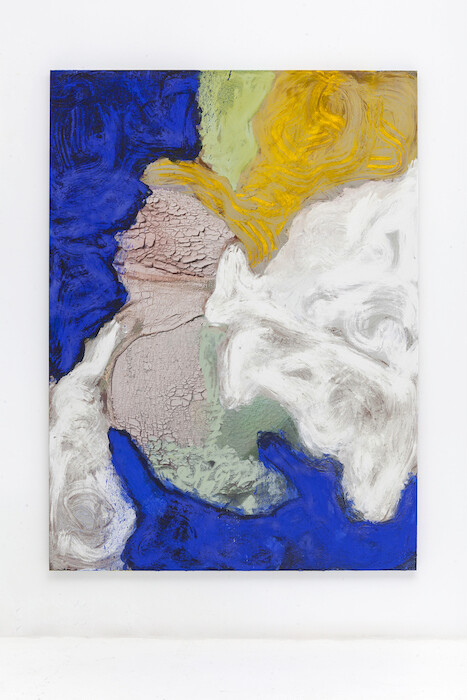September 5, 1782. Bartolina Sisa, Aymara leader of the indigenous uprising against the Spanish in Bolivia, is brutally tortured, publicly humiliated, and killed by hanging. Her body is dismembered and, to prevent further rebellion, her head and extremities are exhibited at several locations known for their resilience. Bartolina Sisa has subsequently become a symbol for the struggle of indigenous populations throughout Latin America, and, since 1983, September 5 has been celebrated as International Day of Indigenous Women.
The title of the first exhibition by Bolivian-American artist Donna Huanca at Travesía Cuatro in Madrid refers to these facts, setting up a very precise symbolic framework. In recent years, Huanca’s work has stood out for its understanding of the body, and of the skin in particular, as a territory where surface and matter converse with architecture, space, and the world. Through paintings, sculptures, and performances, the artist creates disturbing futuristic-prehistoric scenarios where identity shatters into a sort of schizodynamic production of knowledge. In these performances, a set of actions is carried out by regular collaborators, producing slow-paced choreographies that conjure private rituals and meditations in the gallery space, confronting the viewer with a scenario equal parts uncomfortable and suggestive.
Last autumn, Huanca developed a performance-based commission at the Zabludowicz Collection in London that pushed these issues to the limit, developing performances that took place on a daily basis. The exhibition at Travesía Cuatro delves into this line of work on a smaller scale, generating a space where bodies, materials, and forms gather to establish an architecture of presence. The titles of the paintings, through which matter emerges as something between the natural and the artificial, and in which blue predominates over skin tones and earthy colors, allude to different types of rocks, minerals, and natural processes, such as Vaporize Rock (2016). The totemic sculptures, on the other hand, combine a variety of materials that relate to the body and which stand out for their tactile qualities, such as clothes, skin, silicone body imprints, natural and synthetic textiles, or re-contextualized cultural artifacts. Collaborators’ bodies are painted from head to toe, resembling figures halfway between a shaman and a futuristic raver. As they move through the space in a trance, following an icy choreography, they switch positions, climb up and down stairs and props that are scattered throughout the gallery, and engage with paintings and sculptures in a wordless dialogue. A poem, written by the artist and presented in the press release, once again alludes to the story of Bartolina Sisa—her dismembered body, her blood spilled over the earth, and the survival of her spirit and vitality. This is embodied, in the exhibition, by the constellation of warriors and goddesses, represented textures, scarred and burned skin, or ripped hair.
The desert, the animist, and the virus—the scenario Huanca created could very well give shelter to these three figures, which Elizabeth Povinelli uses to explain geontopower, a mode of power that operates through the regulation of the distinction between life and non-life. 1 The desert, the animist, and the virus are a collection of ruling ghosts that exist between two worlds: a world where oppositions dependent on life (bios) and death (thanatos), and life (bios) and non-life (geos, meteors) are both sensitive and dramatic; and a world where these enclosures are no longer, or have never been, relevant, sensitive, or practical.
Huanca’s practice explores a position bound by these two worlds. It questions systems of knowledge such as biology, ecology, geology, or anthropology, disclosing the ontological altercation Povinelli describes. Surrounded by the silent matter of the paintings and sculptures, one can almost feel the constant danger of life in relation to nonlife. The indigenous imaginary and the uncanny but vital collaborators’ movements actualize the animist insistence on the fact that all forms of existence have within them a vital affecting force. All the elements in the exhibition—both bodies and objects—are impregnated with cosmetic pigments, unifying and stabilizing the animate with the inanimate, the human with the mineral, the organic with the synthetic. The bodies’ coloration—like a virus—confuses and levels the difference between life and nonlife, and operates as an instrument of transformation, setting up a model for the fragmentation of cultural, gender, and national identities and the dissolution of the false dichotomy of nature and culture. After all, the death of Bartolina Sisa is not only a symbol of the defeat of a people against their conqueror; it also marks the affirmation of a progressive disappearance of diversity in lifestyles and ontologies in favor of the global uniformity of colonial violence.
Elizabeth Povinelli, Geontologies: A Requiem to Late Liberalism (Durham, NC: Duke University Press, 2016), 16.
